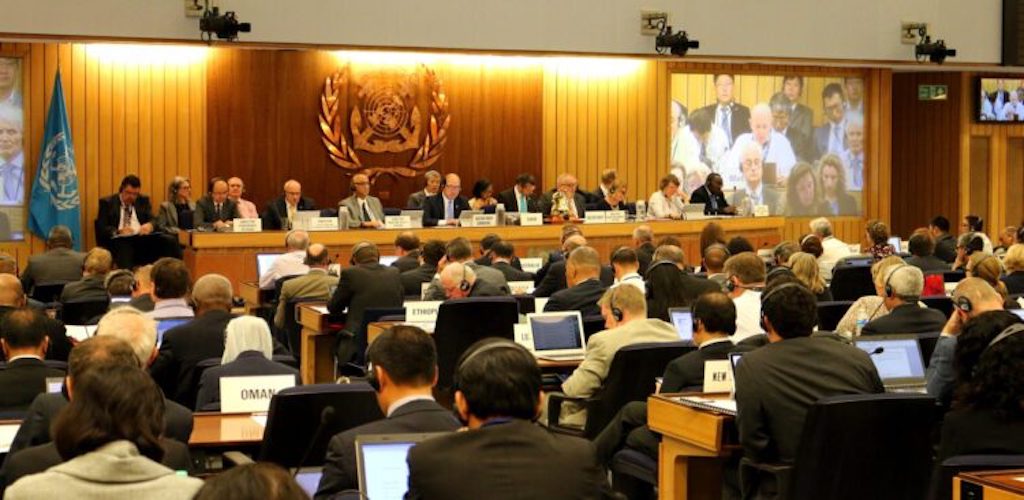(Global) MEPC to Approve Proposals at June Meeting

By Malcolm Ramsay
The launch of new International Maritime Organization guidelines later this month appear to implement new requirements for breakbulk shipping, raising a number of short-term challenges, but also driving long-term efficiency gains.
The proposals aim to reduce carbon intensity of international shipping by 40 percent by 2030, compared to 2008, and are centered around two new measures. The first is a technical requirement to reduce carbon intensity, based on a new Energy Efficiency eXisting Ship Index, or EEXI, while the second is focused on operational carbon intensity reduction requirements, based on a new operational carbon intensity indicator, or CII.
“We need to get the IMO objective right. The IMO Initial Strategy on Reduction of GHG [greenhouse gas] Emissions from Ships contains a number of objectives or targets if you will,” Lars Robert Pedersen, deputy secretary general of shipping association BIMCO, told Breakbulk. "The true effect of the carbon intensity regulation is difficult to model as it depends on many factors; not least the ability of ship owners to persuade their charterers to operate the ships in a manner which improves the CII rating of the ships as required by the regulation."
The proposed measures are expected to be adopted by the IMO’s Marine Environment Protection Committee, or MEPC, when it meets for its 76th session, June10-17. Under terms of the draft guidelines the MEPC will call for mandatory measures to cut the carbon intensity of all ships, via amendments to the MARPOL Convention.
Annual Efficiency Rating
The MEPC's proposed dual approach aims to address how ships are equipped and retrofitted as well as operational measures, but raises a number of complex problems for breakbulk shipping lines.
“Carbon Intensity is defined as CO2 emissions by weight per transport work. The latter is not defined explicitly in the initial strategy, but because the IMO Fuel Data Collection System holds data which can only support one metric for calculating baselines for 2019, it is now recommended by the intersessional working group to MEPC as being the AER (annual efficiency rating, measured as g-CO2/deadweight ton mile),” IMO's Pedersen explained.
This creates a multifaceted problem for breakbulk operators, as vessels typically work on bespoke projects with differing demands and energy requirement, making a one-size-fits-all solution difficult to come by.
“Many things may improve the carbon efficiency of shipping, such as more efficient engines and ship designs, lower carbon content in fuels, usage of wind assisted propulsion, etc. Specifically for the AER metric only two variables can be influenced. These are the actual emissions by e.g. lowering the speed, and the distance accumulated on a voyage. This makes the incentives ambiguous in terms of total emissions from the fleet. You may improve the rating by slowing down, or you may be improving the index by loading less cargo on the ship," Peterson said.
"In practice this is likely to mean a series of complex calculations for breakbulk shipping lines as they seek to balance emissions with flexibility in cargo handling. In comparison to well-established container trade that can plan cargoes and routes well in advance, many multipurpose vessels require the ability to re-jig capacity at short-notice," he added.
Verification
Guidelines agreed by the meeting of the Intersessional Working Group on Reduction of GHG Emissions from Ships at the end of May include methods for calculation and certification of EEXI, guidelines on shaft/engine power limitation, guidelines on calculating and rating CII.
Under the proposed amendments, ships of 5,000 gross tonnage and above, will have to determine their required annual operational CII., providing documentation and verification of actual annual CII achieved.
A crucial element of the guidelines will the CII reduction factor, also known as the "Z-factor," which will outline the rate of annual carbon intensity reduction. Through this phased approach, vessel operators must have applicable ships rated on a scale of carbon intensity – A, B, C, D or E – and record this in the ship’s Ship Energy Efficiency Management Plan, or SEEMP.
Similarly, vessel operators must record and verify attained EEXI for every ship at its first survey following entry into force of the amendments. Relevant vessels will then be required to meet a set reduction factor, expressed as a percentage relative to the EEDI baseline.
The IMO will encourage administrations and port authorities to provide incentives to ships rated as A or B and those vessels with the highest energy efficiency rating.
“BIMCO is convinced that the EEXI will make ships more efficient, as it places a lid on how fast ships are able to travel,” Pederson said.
If approved the draft amendments would require a review of the CII and EEXI by the end of 2025 at the latest, with IMO’s Initial GHG Strategy to be revised by 2023.



